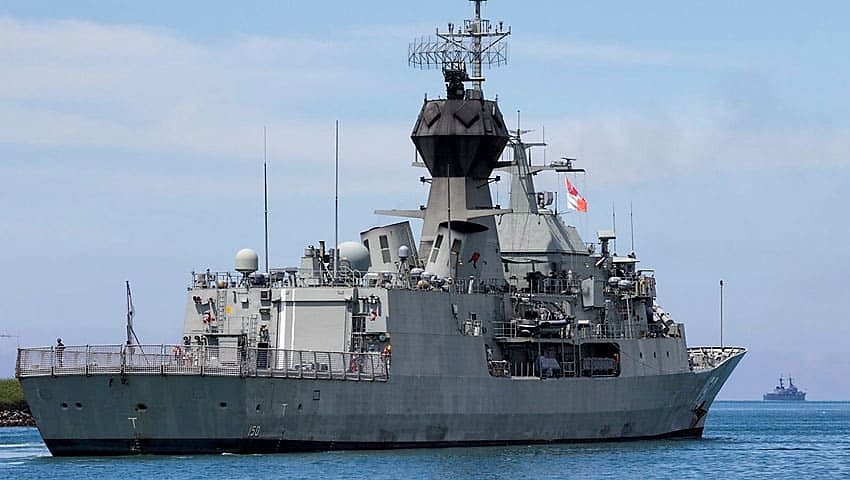The Royal Australian Navy’s destroyer HMAS Brisbane and frigate HMAS Anzac have conducted high-end simulated sea combat on opposite coasts as part of Exercise Viking Raider.
HMA Ships Brisbane and Anzac fought together in a real-time maritime warfare scenario using operation room simulators in NSW and Western Australia, respectively.
Personnel from HMAS Brisbane used the Air Warfare Destroyer Simulator at HMAS Watson to bring the Hobart Class warship’s advanced layered offensive and defensive combat capabilities to the exercise.
At the same time, personnel from HMAS Anzac used the Frigate Simulator at HMAS Stirling to add long-range air, surface and sub-surface capabilities to the scenario, which saw them defend a high-value target against an adversary force.
Royal Navy exchange officer, Lieutenant Edwin Smith, is Anzac’s Principal Warfare Officer and said Exercise Viking Raider tested the ship’s operations room crew in a multi-ship environment as well as improving the skills within their team.
Lt Smith said, "My job is to bring all the information from our internal sensors as well as the external information feeds together to give us a coherent picture, and piece that together with the law and rules of engagement in order to make recommendations to the Captain."
Director of Navy’s Fleet Force Generation Directorate, Captain Pete Bartlett, said synthetic training through exercises like Viking Raider complemented traditional at-sea training and provides unique benefits.
"Simulation removes the restrictions of the real world by allowing for an increase in scale, density, and complexity of the training environment. We can challenge multiple ships working as a Surface Action Group in high-end air warfare, surface strike and interdiction scenarios in a much more cost-effective way and without committing resources at sea," Capt Bartlett said.
He added, "This also helps balance training needs with maintenance for our ships and respite requirements for our people. One of the biggest advantages of synthetic exercises is the ability to immediately play back the scenario afterwards, review the data and break down any lessons. Ships can see where they can do better and sharpen their response for the next run. You just can’t do that outside of a simulated environment."
HMAS Brisbane is the second of three Hobart Class guided missile destroyers – the Hobart Class will provide air defence for accompanying ships in addition to land forces and infrastructure in coastal areas, and for self-protection against missiles and aircraft.
The Aegis Combat System incorporating the state-of-the-art phased array radar, AN/SPY 1D(V), in combination with the SM-2 missile, will provide an advanced air defence system capable of engaging enemy aircraft and missiles at ranges in excess of 150 kilometres.
The Hobart Class will carry a helicopter for surveillance and response to support key warfare areas. The surface warfare function will include long range anti-ship missiles and a naval gun capable of firing extended range munitions in support of land forces.
HMAS Brisbane will also conduct undersea warfare and be equipped with modern sonar systems, decoys, surface-launched torpedoes and an array of effective close-in defensive weapons.
HMAS Anzac (III) is the lead ship of eight Anzac Class frigates built by Tenix Defence Systems at Williamstown, Victoria, for the Royal Australian Navy. The design is based on the German Meko 200 frigate.
Anzac is a long-range frigate capable of air defence, surface and undersea warfare, surveillance, reconnaissance and interdiction. Anzac's combat capabilities have been significantly improved under the Anti-Ship Missile Defence upgrade program, a world-class program that provides an enhanced sensor and weapons systems capability.
The upgrade showcases Australian design and integration capability, with new phased array radar technology designed by CEA Technologies in Canberra, upgrades to combat systems performed by Saab Systems in South Australia, and platform integration design by BAE Systems in Victoria.



